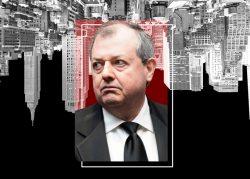The pandemic slammed New York City’s retail, office and hotel sectors, a hit that may mean a sharp drop in property taxes collected next year.
The tentative tax assessment for 2022 shows assessed values of those commercial properties fell 9.6 percent year over year, according to a report in Barclays. And it showed the total market value of those properties fell even more dramatically, nearly 16 percent, according to the report, “The Empire State of Real Estate.” Hotels fell the most, followed by retail properties then office.
The report’s authors were “not overly concerned about the prospects of New York City, but a lasting downturn in commercial and multi-unit residential real estate could pressure its economy for years to come,” they wrote.
While the housing market has steadily improved since February, the rental market is still suffering. In June, Manhattan’s apartment vacancy rate was 6.7 percent, up from 3.67 percent last year, according to Douglas Elliman. The number did fall from 7.6 percent in May, signaling an improvement. Still, Covid’s impact on apartment vacancies and the office market’s slow comeback, could depress property values and drive down collections over the next several years, the report noted.
Read more


Property taxes account for 31 percent of the city’s annual revenue, and commercial and multifamily properties are the largest contributors to that slice. And they now have the most uncertainty, particularly multifamily and office buildings. That could lead to lasting declines in their assessed value, it noted.
The city determines taxable property value through net operating income, which dips when occupancy levels do.
Only 62 percent of employees are projected to return to offices by September, and it’s unclear the amount of space that longer-term hybrid work models will require. Office vacancies, in turn, are expected to peak at over 14 percent in 2023, according to CoStar data cited in the report.
Newer buildings and those redesigned for a post-Covid world will likely be in greater demand, but older Class B buildings are the biggest contributors to the tax roll. Occupancy levels at those properties could drop by up to 20 percent, sinking net operating incomes by as much as 26 percent, the report found.
Overall, multifamily vacancy rates are 10 to 15 percent higher than pre-pandemic levels, which could mean a drop in market value of about 13 to 18 percent, according to the report. Barclays used Stuyvesant Town and Peter Cooper Village apartment complexes as an example. Combined, the massive developments saw net cash flow slip by 33 percent last year and occupancy drop 15 percentage points to 79 percent during that period.
The encouraging news is vacancy rates across property types are falling or nearing their highs, according to the report. Rent levels for multifamily properties are also close to what they were before the pandemic. Meanwhile, some office buildings receiving tax abatements are expected to burn through the benefit in the next few years, eventually boosting the tax roll. An example: The payment in lieu of taxes program benefiting the Durst Organization’s One Bryant Park expires in 2029.
And though never a popular choice, the city could always hike taxes, the report noted. While smaller property owners have pushed back on rising tax rates, the city’s commercial and residential property tax rates are far below average, it said.
